Masks of Nyarlathotep - Session 1
Finally playing some Call of Cthulhu
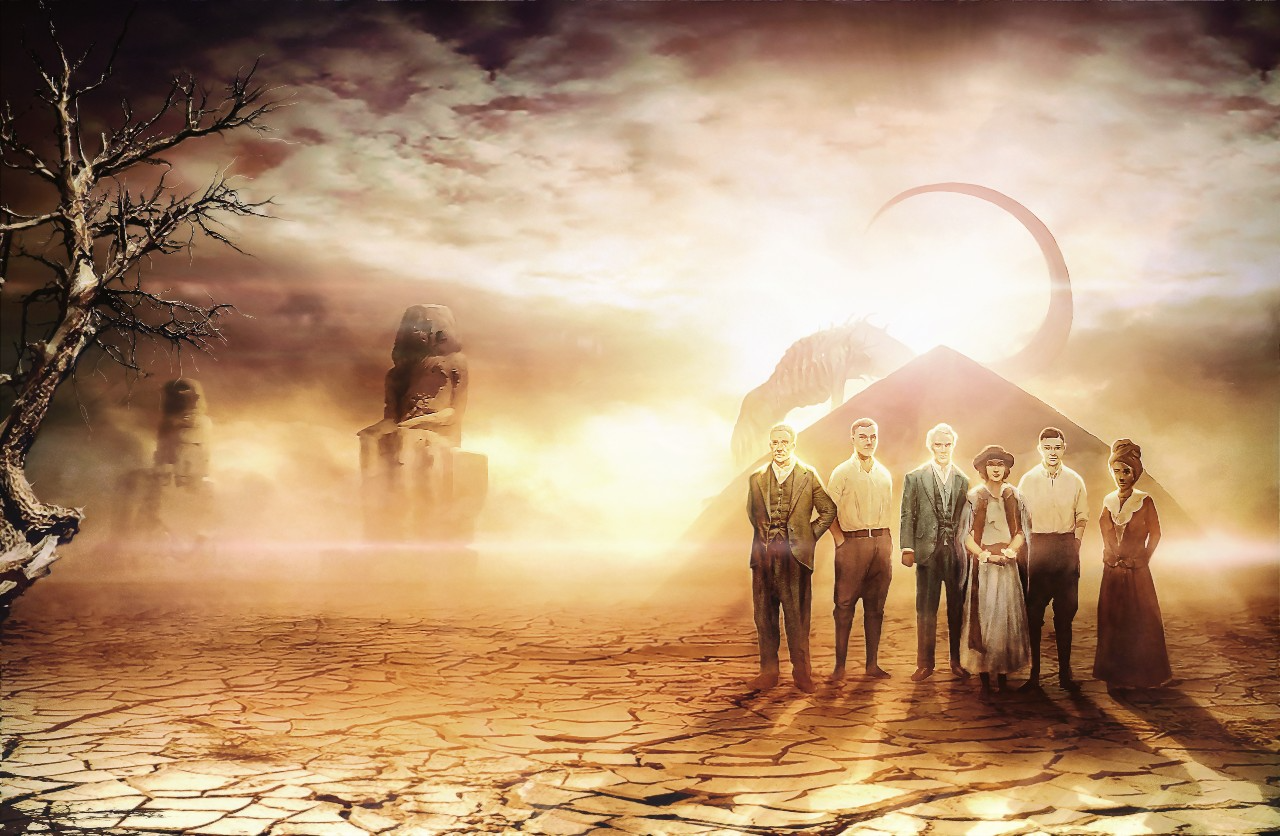
I got invited to join a campaign of Masks of Nyarlathotep, one of the most well-known Call of Cthulhu campaigns. I’ll be keeping a campaign journal in this series of posts.
1. The Campaign
I’ve never played Call of Cthulhu before but I’ve known tons of really dedicated gamers over the years who have raved about it, so I’ve always wanted to try it. According to wikipedia the campaign was originally published for Call of Cthulhu 2nd edition, but we are playing the new version remade for CoC 7th Edition. We’re playing using Discord and Roll20, which I’ve had experience with and it’s certainly good enough to have plenty of fun with. We’re going to try to play weekly with short sessions so we should be able to keep the pacing fast and interest levels high. The group is drawn from the Mutant Crawl Classics table I’m playing in (which I guess I should write about at some point) so it’s a cool change of pace.
2. The Investigators
In Call of Cthulhu the PC’s are typically ‘investigators’ rather than ‘adventurers’ or heroes or what-have-you. Instead of being career soldiers or knights or whatever you are much more likely to be a graduate student or a reporter. This of course follows from Lovecraft’s work1, in which many of the main characters are academics or journalists who have stumbled upon some evidence of the greater world we don’t know about and have decided to investigate.
This campaign comes with a number of pre-generated characters. Since this is the first experience most of us have had with Call of Cthulhu we decided to just pick from among them and get into it quickly.2 I have always wanted to play the role of the curious professor in a cosmic horror story so I chose to play Johan Braun. Here is the complete party:3
The Doctor

Arthur Dibden served in the British Royal Army for over twenty years. After the war he took up traveling, and wound up in Colombia fighting the Spanish Flu.
The Historian
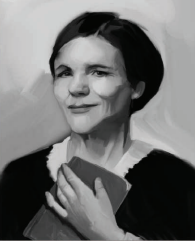
Eleanor Butler grew up on a farm in the Midwest before running away to New York to study history. She signed on to the expedition to try and finally make her mark in academia.
The Dilettante

Jennifer Smallwood inherited a small fortune along with her older sister when her parents were lost at sea in the late 1800s. While her sister has stayed at home, Jennifer has traveled around the world before becoming bored. She signed on to the expedition in search of adventure.
The Professor

Johan Braun was the child of a librarian and a language teacher, and inherited their love of books and learning. The Great War broke out while he was teaching at the University of Wurzburg, and he was called to serve in the trenches on the Western Front. When the war ended he left Europe behind in order to escape the horror he had seen. He took a position at UC Berkeley, but was not able to fit in with the American way of life. He hopes to find a way to put his expertise to good use on the expedition.
The Adventurer
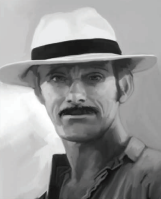
Perry Astor was raised on a Canadian ranch, and his love of the outdoors has stayed with him throughout his life. At 17 he left home and began traveling around the world in search of excitement. He’s joined the expedition because he thinks it’s just the thing he’s looking for.
3. Rendezvous in Lima

Each of the investigators had independently learned of a rich American explorer assembling an expedition to explore an ancient pyramid in southern Peru, and (mostly for curiousity) we had each decided to sign on. We met Mr. Larkin at the Bar Cardenas in Lima, Peru in the evening of March 18th, 1921 to discuss the expedition and make plans for the journey.
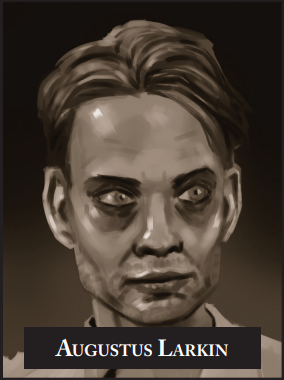

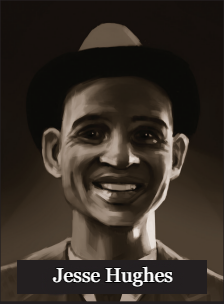
Wearing a fine linen suit and bearing an upbeat, confident manner, Larkin told us a tall tale of an ancient pyramid structure in the Peruvian highlands to the southeast. Accompanying Larkin were two other men who had signed on to the journey. Luis de Mendoza was clearly Larkin’s body man, and he seemed to be angry about it. Scowling at anything and everything, he did not say a word during the meeting. The other man was a Black American archaeologist who seemed only too pleased to have this kind of opportunity.
Larkin told us of fabulous riches which could be recovered at this ruined temple. According to him, he would have done it already if he had had a proper team with him. He said it would take about a week all told to travel there, first by truck to Puno, then by mule to the ruin itself. When asked some questions about the site, Larkin showed the group two archaeological pieces found previously at the site, both made from gold. The first was a sort of pendant depicting a man-shaped figure holding two rods. The second, a golden cup, had turqoise inlay in strange non-repeating shapes.
After satisfying our curiousity regarding his previous attempts Larkin and Mendoza bade us good night with plans to prepare to leave for the journey in two days time. Hughes and the rest of us stayed for another drink.
4. What’s Really Going On?
No sooner had Larkin and de Mendoza left than Hughes told us that he wasn’t an archaeologist and his name wasn’t Hughes, but that in fact he was an investigative reporter named Jackson Elias.
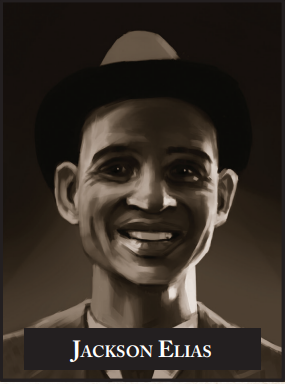
Thinking back on it, several members of our group had actually read some Elias' work, which was predominantly focused on investigating occult death cults. He went on to tell us that he was investigating Larkin and his strange story regarding the pyramid. He pointed out that the two items Larkin had produced couldn’t possibly be from the same site, as one (the cup) was Incan and from the 15th century, while the pendant was from around the 5th century.
Elias told us that he’d been looking into Larkin for a while at this point, and that he’d found traces of a centuries-old death cult near Lake Titicaca (which is quite near Puno and the site of the ruins). Apparently, on his previous expedition Larkin had attempted to hire locals from Puno to venture into the temple, however they refused because of stories of a local creature called a kharisiri, which evidently is some kind of fat-sucking devil.
Discussing the ramifications of all this, we decided that we couldn’t possibly take Larkin at his word at this point. We decided that it would be best to perform some of our own research by heading to the archaeological museum in the morning. We made plans to meet Elias there and went to bed.
5. A Trip to the Museum
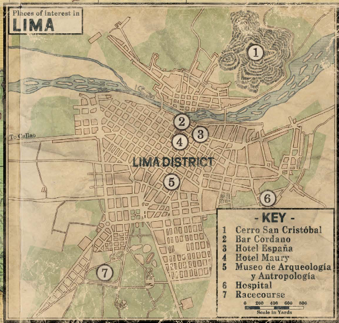
Fortunately for us, just down the road a ways from our hotel was the Museo de Arqueologia y Antropologia, so following breakfast we reconvened there at the office of Prof. Sanchez, a friend and contact of Elias.
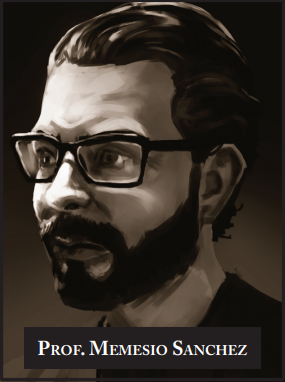
Sanchez told us a curious story: evidently he had, upon reading the story of Larkin’s planned expedition, reached out to try and lend his expertise to the project. Rather than hire on one of the leading experts (someone I would surely like to have along, were I planning an archaeological excavation) Larkin had rebuffed Sanchez’s efforts regarding the pyramid. We spent some time discussing the ruins and querying Sanchez about them, and he told us about recovering a journal written by a conquistador which speaks of something very similar and may reveal its location. Sanchez’s assistant, Trinidad Rizo, had just went down to the storeroom to locate the journal, but had been gone for some time, so Arthur and I decided to go check on her.
Downstairs, we found the door to the storeroom ajar, and upon investigating we discovered the emaciated body of a young woman, missing a palm-sized disk of flesh from her abdomen. She had fallen in the storeroom and been covered by a moderate amount of clutter, and in her fall had broken open a wooden crate packed with straw. We couldn’t help but notice (as we moved Rizo’s body while investigating) the large piece of worked gold inlaid with geometric patterns that was poking out of the box, so naturally we collected it.

Looking around, Arthur located a trail of bloody footprints and we followed them out to the street, where suddenly we heard a loud bang and the screams of passersby trying to get away from a vehicle which had suddenly caught fire. Continuing onward we followed the trail out the back exit to the street, and then around the building to the window from Sanchez’s office where it ended.
Not knowing anywhere else to go, we went back inside to discuss events with our companions. We showed them the 2ft rod of gold, and then began deciphering Rizo’s notebook.

The notebook told the harrowing tale of a conquistador named Gaspar de Figueroa, who had come to Peru in the company of Pizarro and also joined by four others: Hernando Ruiz, Diego Garrida, Luis de Mendoza, and Pedro de Velasco. Everyone in the room sat up with a strange look when we read the third name - surely this could not be the same man we had met the night before?
6. The Obligatory Trip to the Library
Not able to determine anything further at the museum but simultaneously feeling that we did not know enough yet, we decided to go to the local library to see what we could turn up. While I searched in vain for a text about the history of the local area, the others in the group found a document tying Figueroa to a Padre de los Gusanos, and Sanchez managed to piece together the location to the pyramid, south of Puno.
We decided as a group to prepare as rapidly as we could and depart Lima ahead of Larkin. If we could get to the ruins ahead of him, we could perhaps head off whatever strange plot he had concocted. That settled, we divided up tasks and set about gathering supplies for the journey.
7. Turns out he talks after all
Towards the end of the day we met up once again for dinner. On the way back to the hotel, I noticed that we were being followed in the street. Perry, who seemed all too accustomed to this sort of thing, organized us so that we quickly moved out of sight and were able to observe de Mendoza as he followed in our path. Confronting him, he made vaguely threatening statements to us, in particular saying that he “always looks in on anyone working with the master”, whatever that means.
Unnerved but undeterred, we returned to the hotel and each went retired to our rooms. If things went according to plan we would be well on our way to Puno this time tomorrow.

8. Final Thoughts
This session comprised roughly half of the prologue chapter of the campaign. We spent most of it getting to know each other, figuring out our character sheets and the inevitable technical problems with Discord, and working to establish the familiar rhythm you get into when you have been playing with the same group for long enough. While we haven’t really done much yet I can say with some certainty that this is a very cool game, and I’m really excited to have a chance to play Masks.
-
It bears pointing out that Lovecraft was racist and his outsized influence on modern horror literature is more than a little problematic. ↩︎
-
We have been assured that we’ll be seeing new faces pretty soon. I guess that’s good? ↩︎
-
This material is freely available from Chaosium’s itch.io page. ↩︎